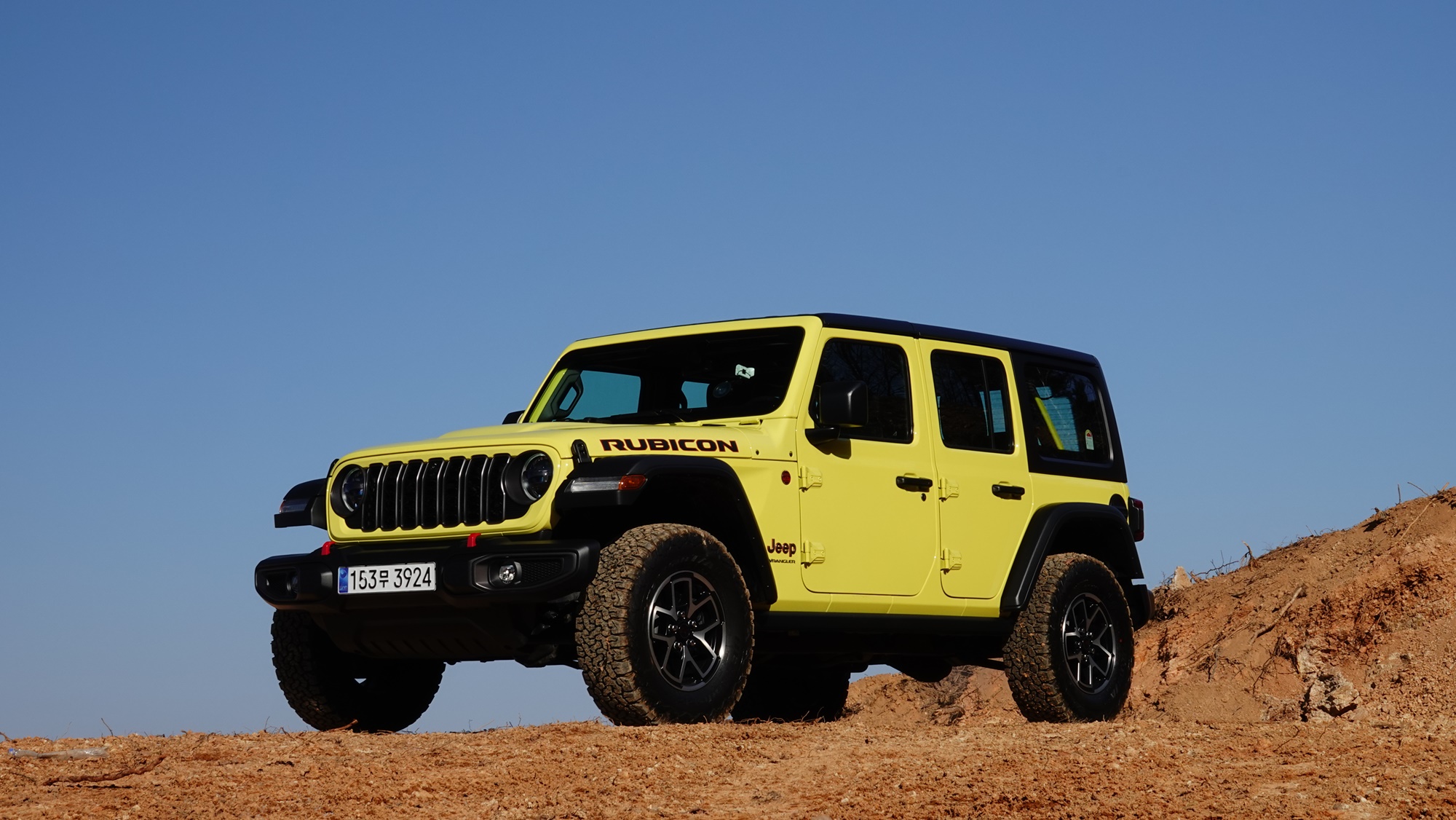
The Wrangler is busy, having launched a new model right at the start of the new year. It’s the ‘New Wrangler,’ which has undergone a facelift six years after its global debut in 2017.
The familiar seven-slot grille, round headlights, and trail-rated badge are all welcome sights. The steel antenna that used to sit in front of the right A-pillar has been removed, replaced instead by an integrated antenna in the rear window.
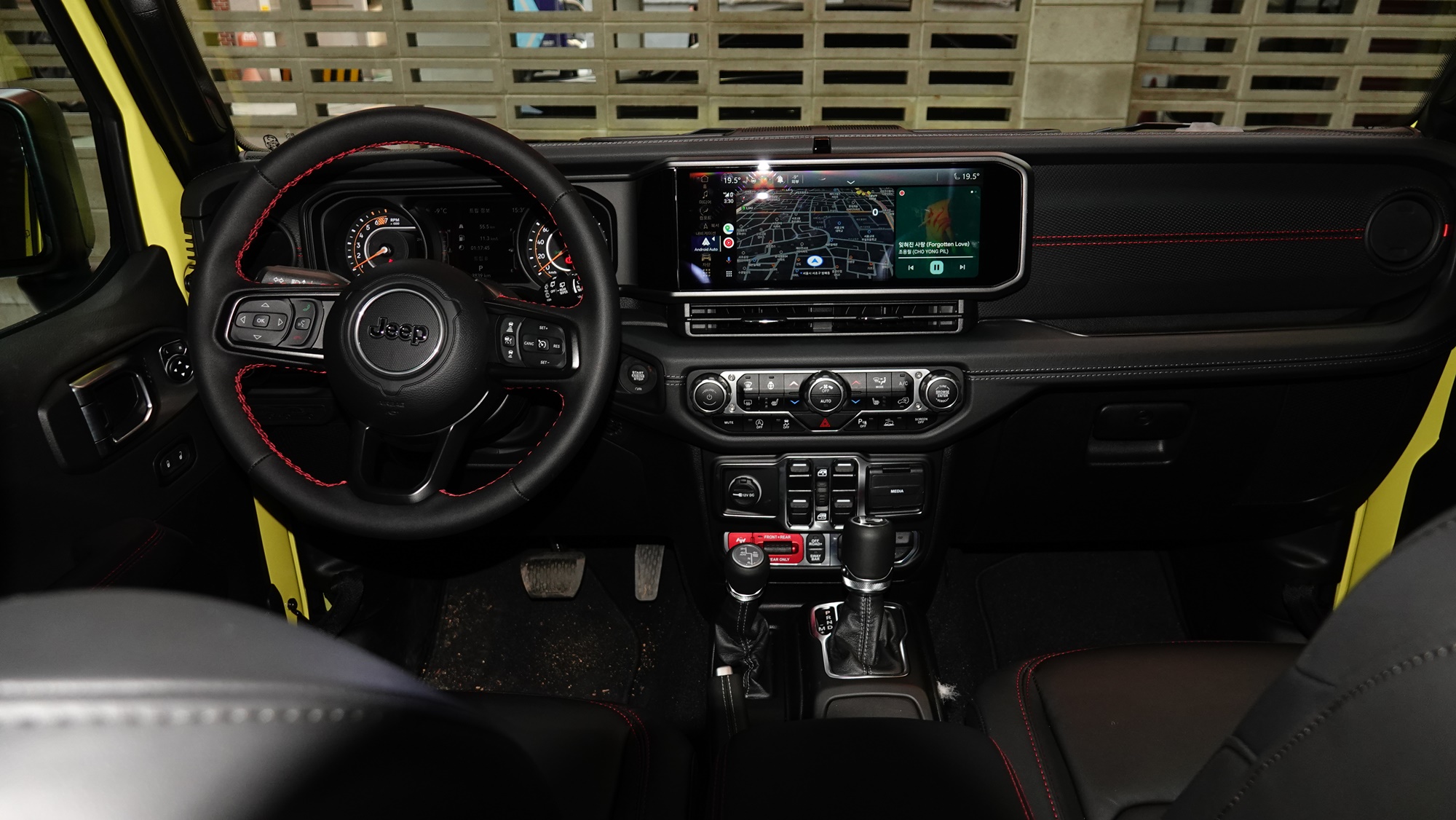
Stepping inside reveals a spacious screen. A 12.3-inch touchscreen is placed in the center of the dashboard, housing Jeep’s infotainment system, ‘Uconnect 5.’ It allows for wireless connections to Apple CarPlay and Android Auto, enabling Bluetooth connectivity for two smartphones at the same time. The wireless feature adds convenience.
The entry-level trim, Sport S 4-door, has been introduced, and the previous ‘Overland’ has been renamed to ‘Sahara,’ reverting back to its original title. This back-and-forth renaming doesn’t project stability; a solid identity is what builds consumer trust—just like the iconic Rubicon.
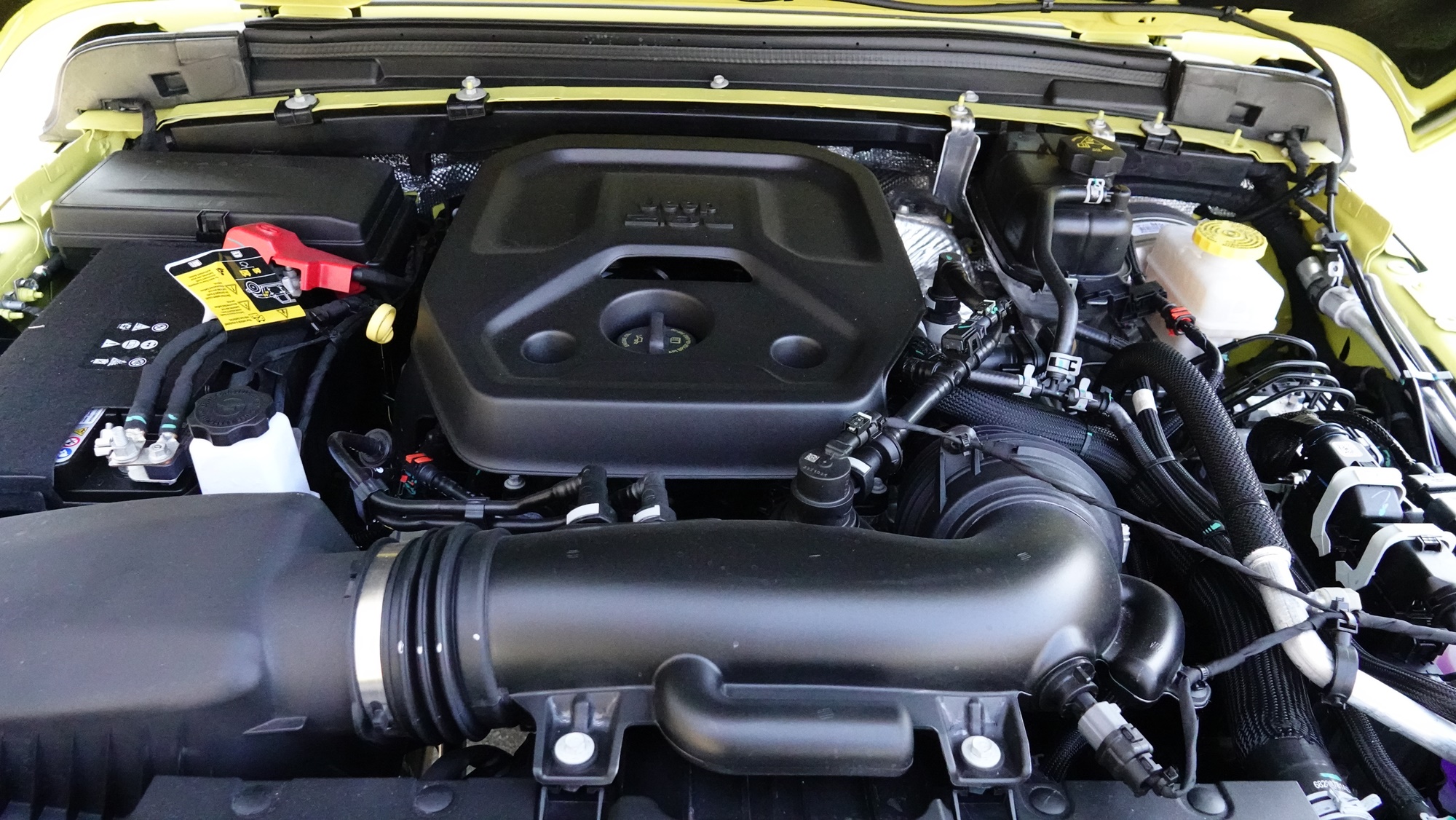
I received a Rubicon 4-door hardtop for test driving and hit the road. It is equipped with a 2.0L inline-4 turbo gasoline engine and an 8-speed automatic transmission, delivering a maximum output of 272 horsepower and a torque of 40.8 kg·m.
Just in time for a freeze, I had to navigate through frigid temperatures of -14 degrees Celsius. For ordinary cars, this would be a good excuse to not drive in cold weather, but with the Wrangler Rubicon, it’s a different story. It becomes a reason to embrace the challenge and drive it. The harsher, rougher conditions allow the Wrangler’s true purpose to shine. And the Rubicon amplifies this effect even more.
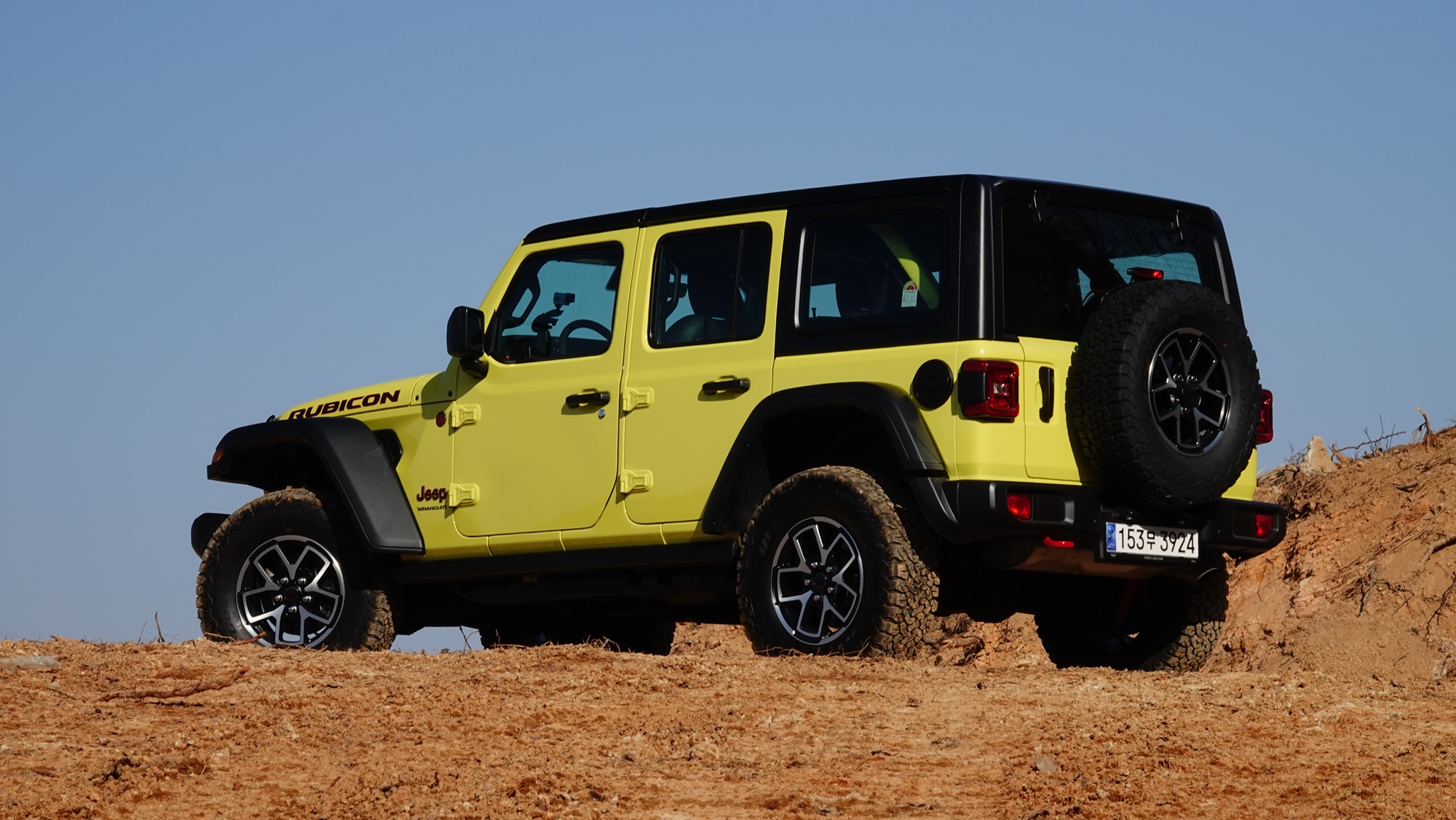
For the Wrangler Rubicon, the meaning of on-road driving is merely an intermediary stage toward off-road exploration. While it may lack slightly in on-road performance and can feel a bit rough, this is entirely understandable for a vehicle designed primarily for off-road driving. Those who fully agree with this premise are truly deserving of becoming Jeep Wrangler Rubicon owners.
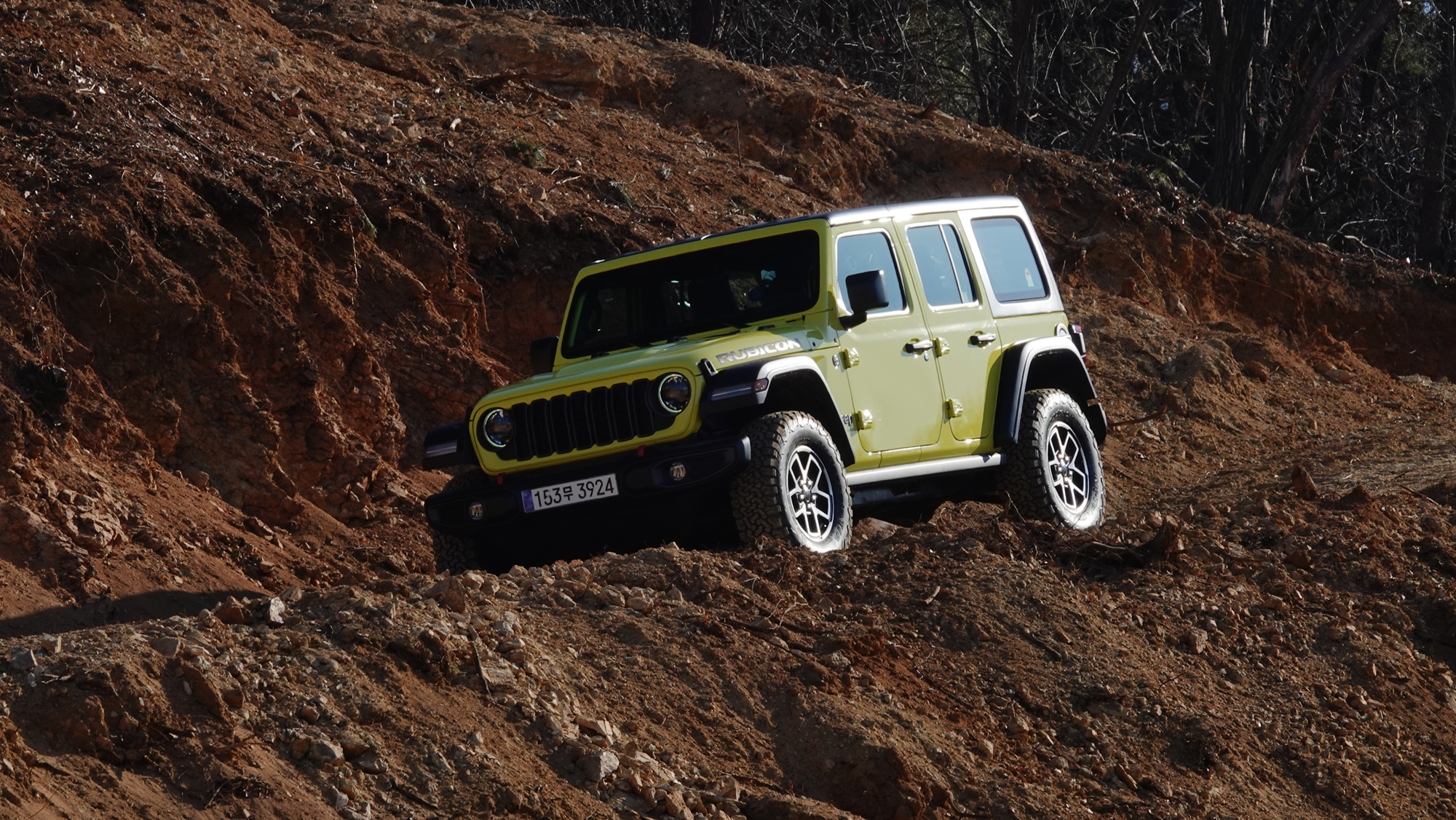
The Wrangler Rubicon is built to be more at home in the wild than on paved roads. Complaints about its height, sway, or wind noise are meaningless when you’re behind the wheel. Owners know this; the reason for driving this vehicle is summed up in one word: ‘Off-road.’ Crossing deep water, climbing over rocks, the Wrangler excels in challenging terrains with an overwhelming performance.
The transfer case features 2H, 4H Auto, 4H Part-Time, and 4L options, with 4L being the most symbolic. It represents the point where you truly meet the essence of an original off-roader with unmatched power. Features like sway bar disconnect and Off-Road+ enhance adaptability across any terrain.
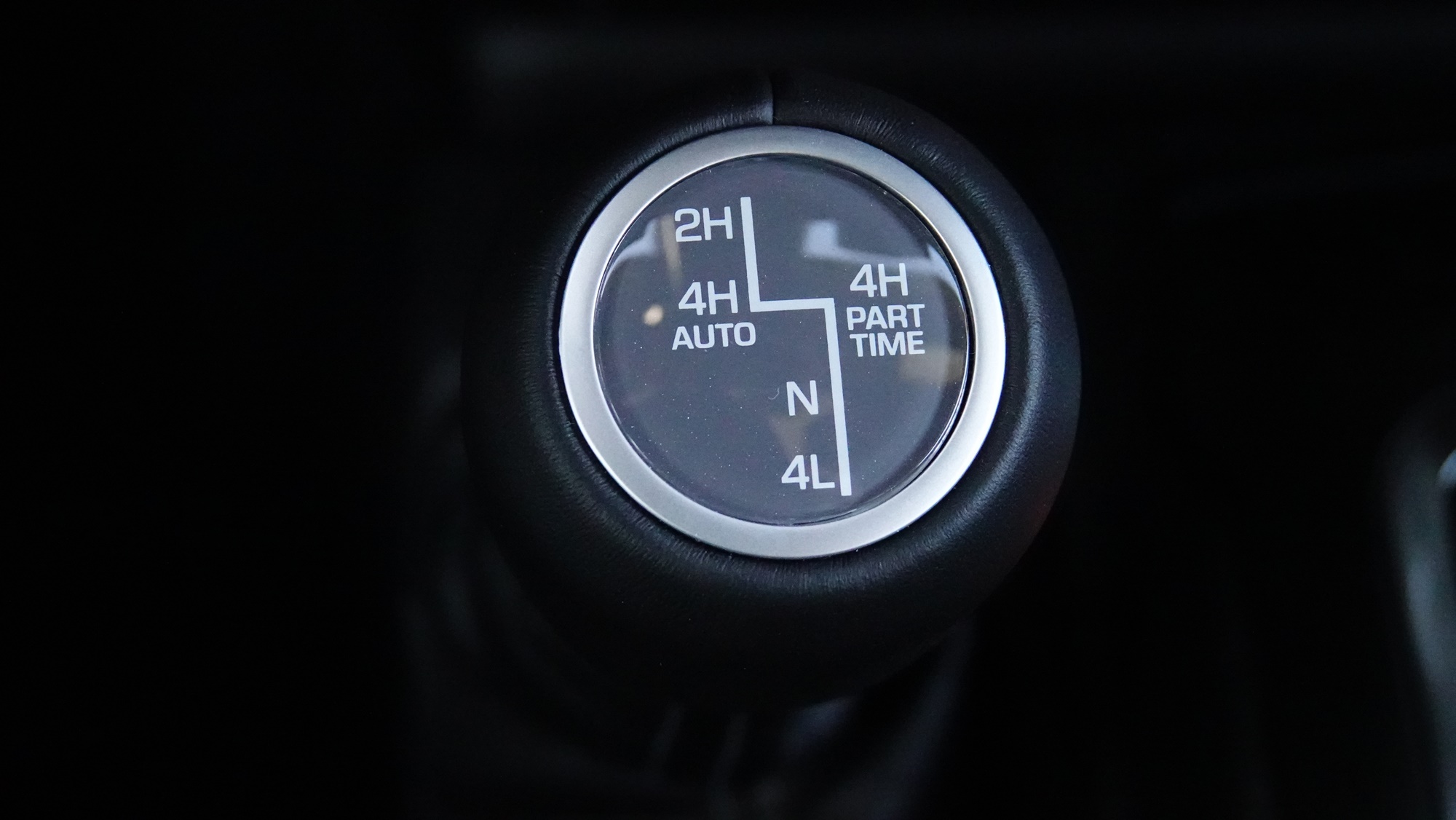
Its electronic stability control system includes roll-over mitigation, trailer sway damping, and hill-start assist (HSA). The Select-Speed Control maintains a speed between 1-8 km/h in 4L mode.
Cold weather is a blessing for the Wrangler. The more rugged the environment, the better it fits. Icy roads facilitate traction instead of hindering it.
With dimensions of 4,800 × 1,940 × 1,865 mm and a wheelbase of 3,010 mm, the Wrangler weighs in at 2,185 kg, which brings its power-to-weight ratio to 8.03 kg per horsepower. It can achieve speeds of 100 km/h in about 8 seconds.
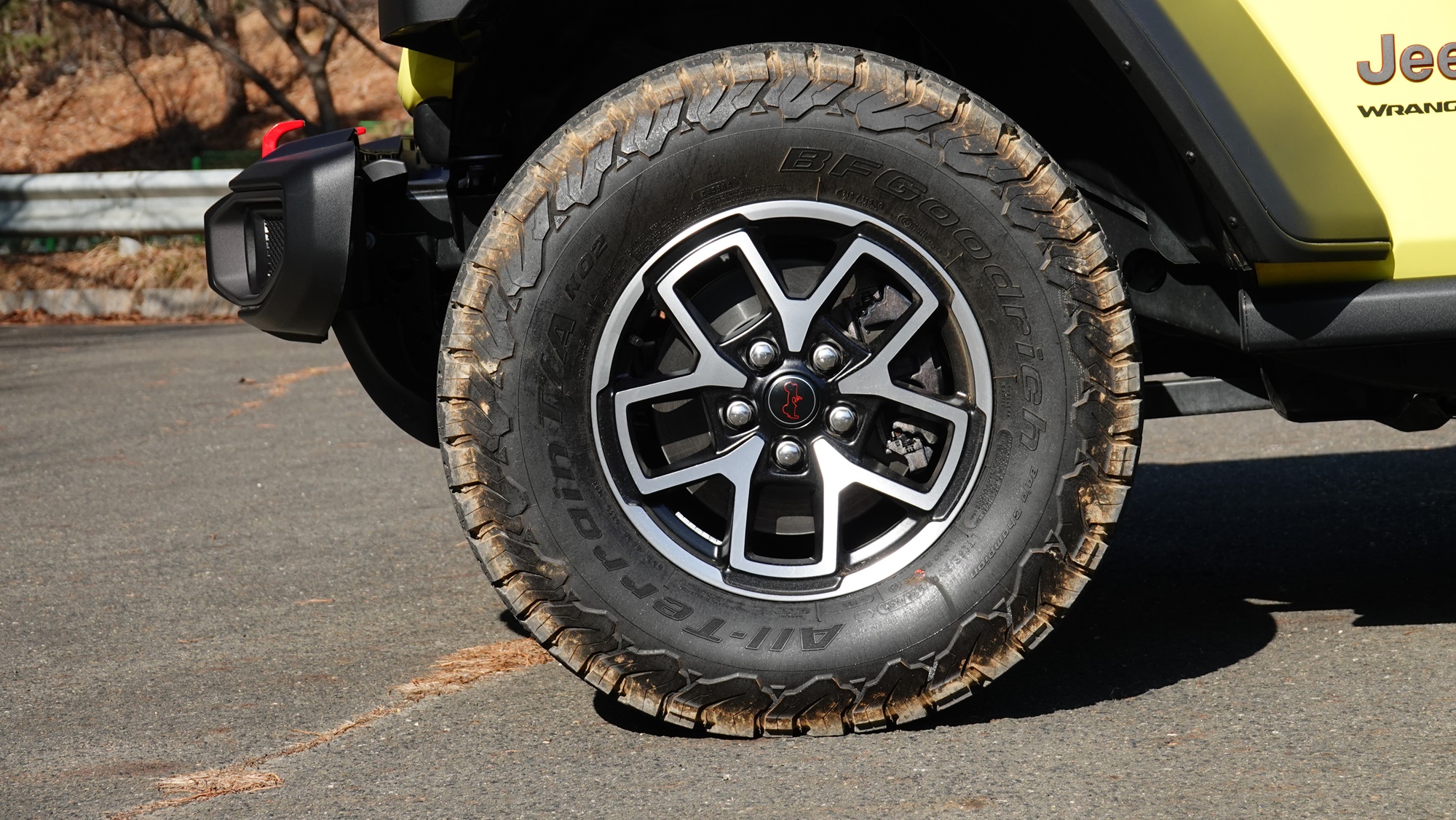
The power is transferred to 285/70R17 tires, designed for off-road performance. This tread pattern provides superior grip against rough terrains, enabling smooth navigation through challenging conditions.
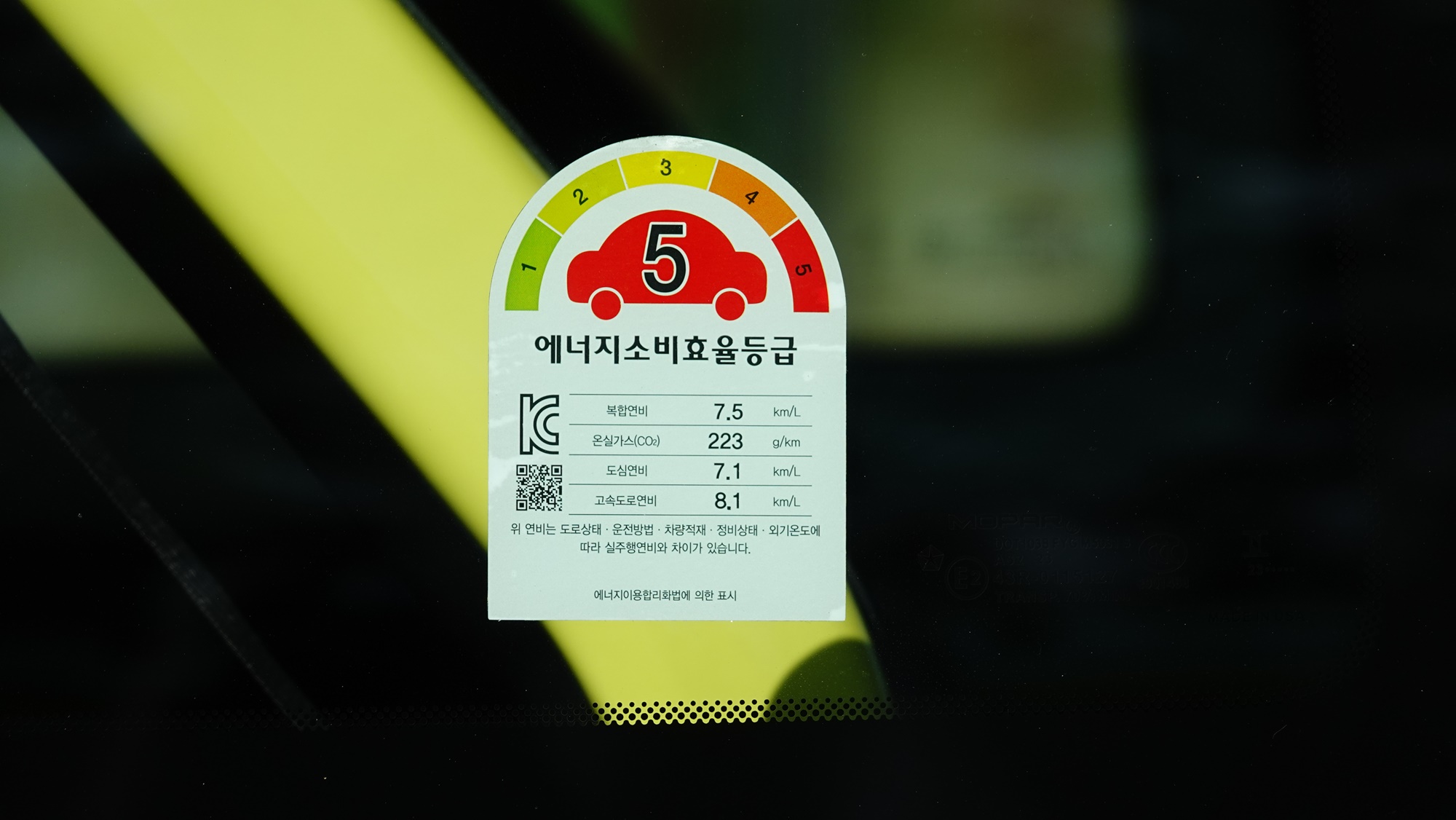
The official combined fuel economy is 7.5 km/L, which isn’t particularly good. However, I measured an actual fuel economy of 11.6 km/L during a 55 km drive between Paju and Seoul, which is decent but may not be indicative of regular driving conditions as it came from a cautious driving approach. Without a doubt, driving off-road while enjoying its capabilities can let the fuel economy slip from the public standard. So, it’s better to enjoy driving rather than focusing on fuel efficiency.
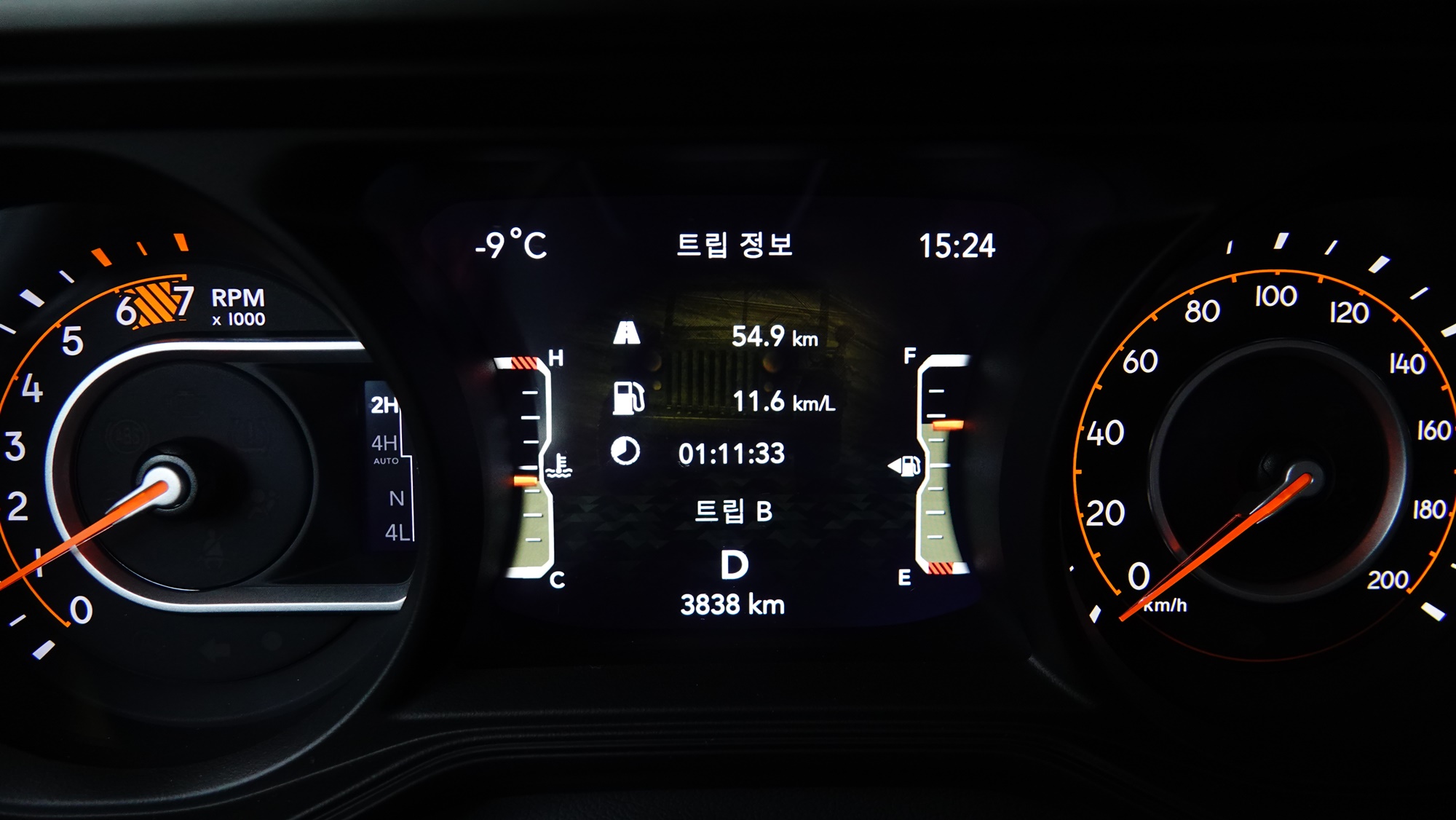
The Wrangler Rubicon 4-door hardtop is priced at 80,400,000 KRW. It’s daunting to take such an expensive SUV off-road, regardless of its impressive capabilities. The repair costs can be quite high in case of damage since off-roading often leads to the underbody hitting ground or branches. However, the Wrangler tends to look good even with minor damages, so we can consider 80,400,000 KRW as the upper limit for the price of a true off-roader built for rugged terrains.
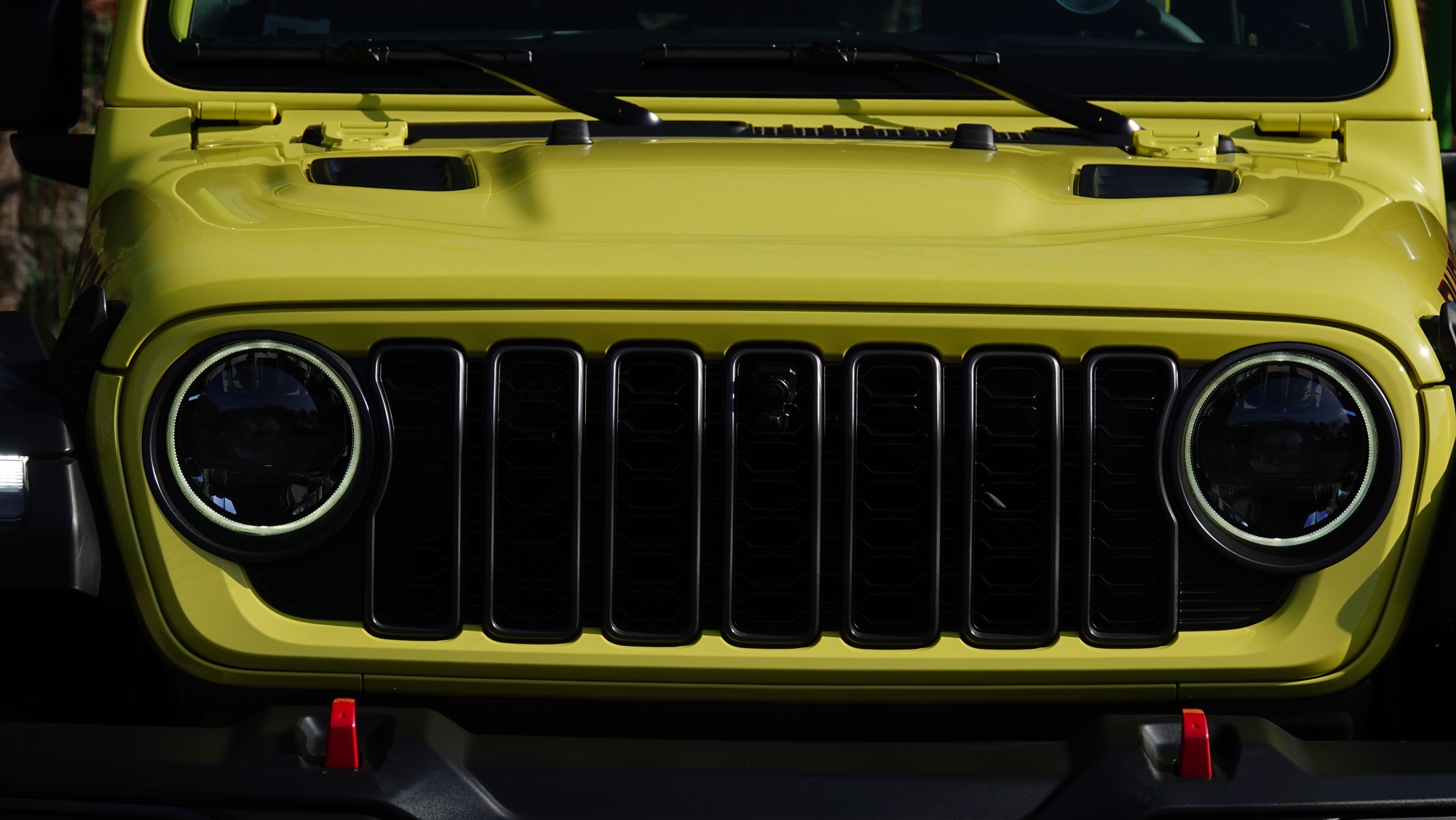
The lowest price is the Wrangler Sport S at 69,700,000 KRW. The Rubicon 4-door Power Top is priced at 83,900,000 KRW, the Sahara 4-door hardtop at 78,900,000 KRW, the Sahara 4-door Power Top at 82,400,000 KRW, and the Rubicon 2-door hardtop at 76,400,000 KRW.
By Oh Jong-hun
The voice command system requires you to speak in a specific wording to respond accurately. Phrases like “Set the temperature to 20 degrees” or “Change the temperature to 20 degrees” don’t work. You must say, “Set the temperature to 20 degrees” for it to comply. It would be nice if it could understand a more casual approach.
Adaptive Cruise Control (ACC) is available, but there is no lane departure prevention feature. While this absence is understandable given the vehicle’s off-road focus, having both would enhance its overall appeal.
Oh Jong-hun yes@autodiary.kr

